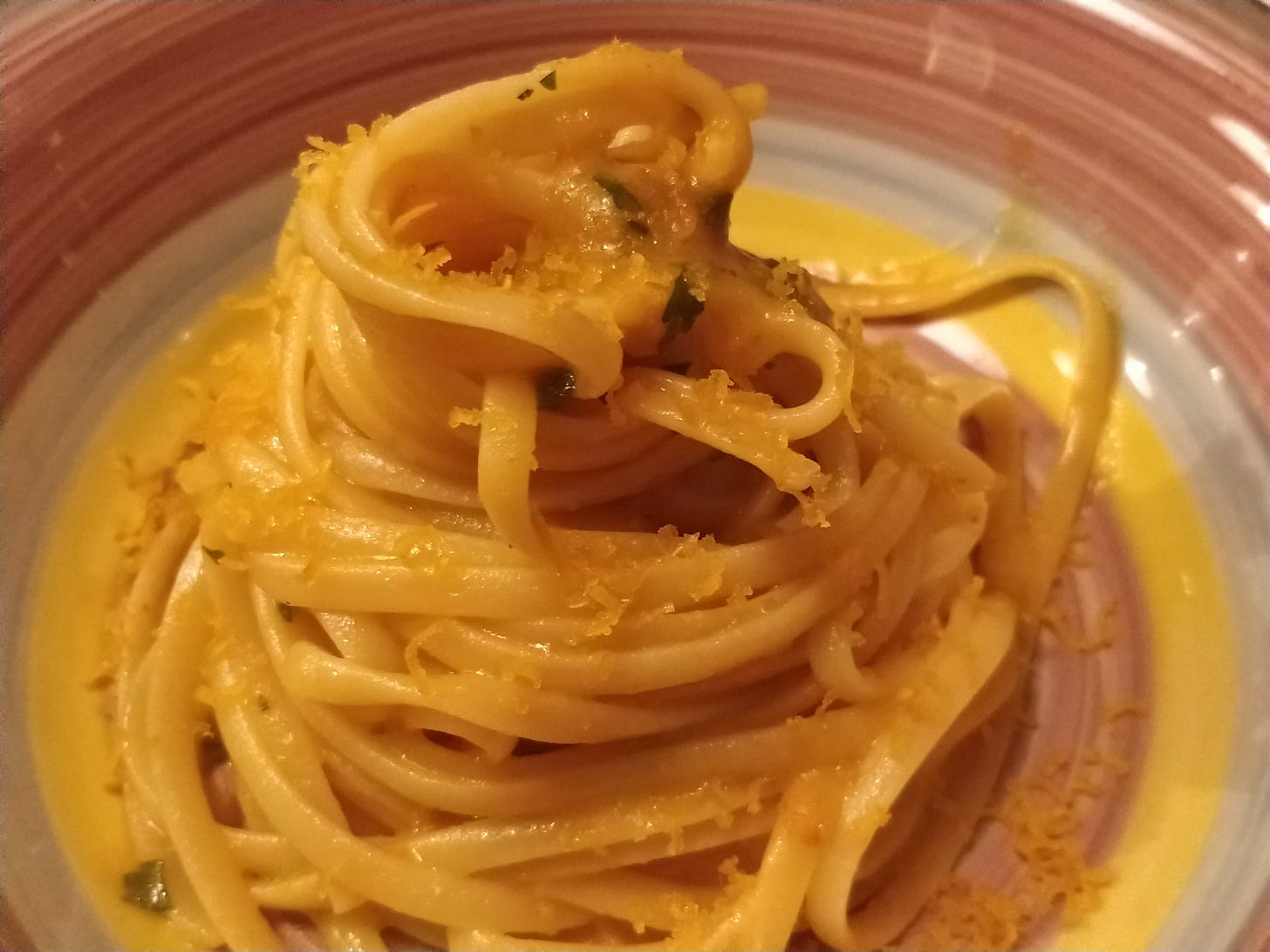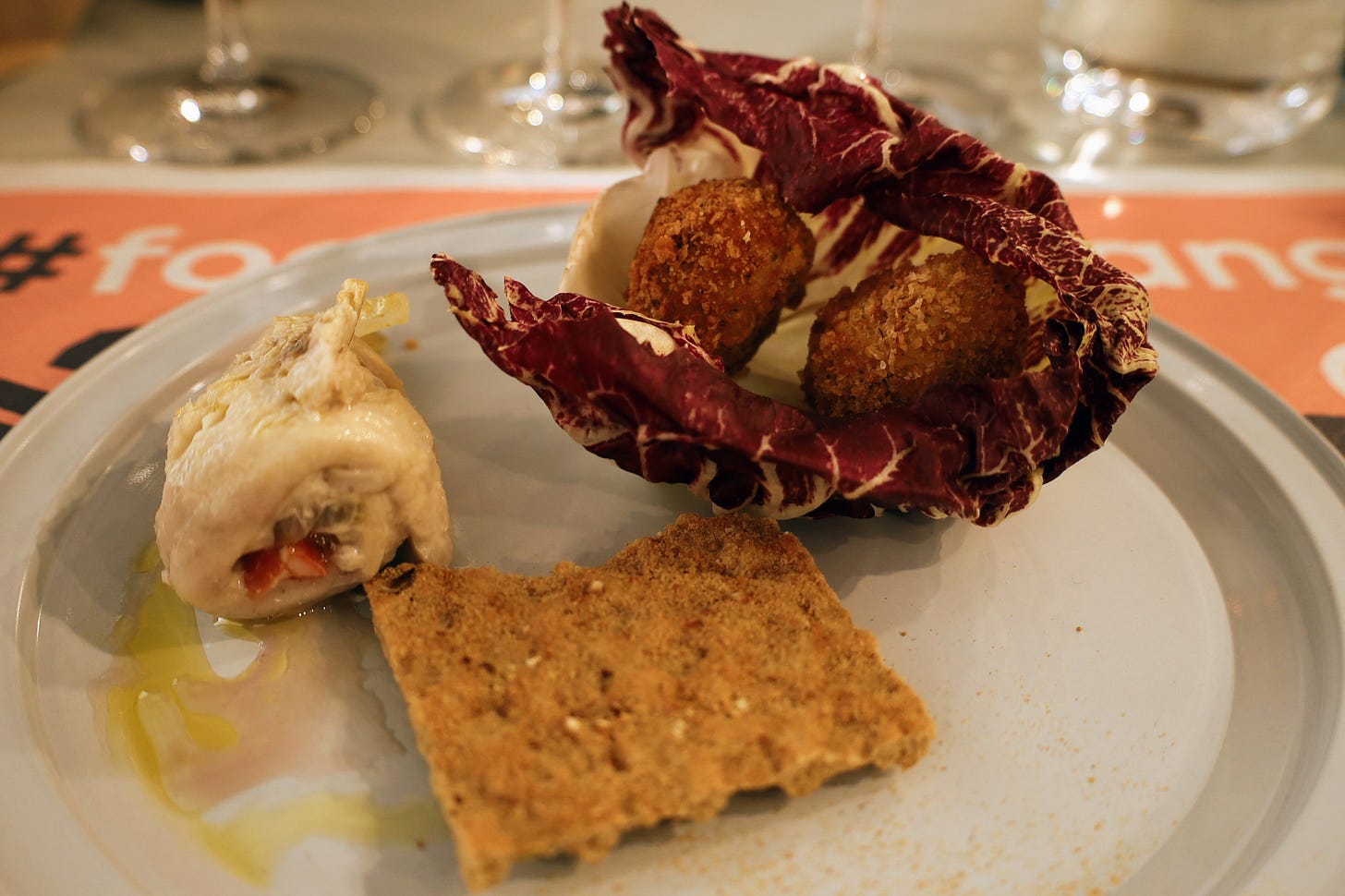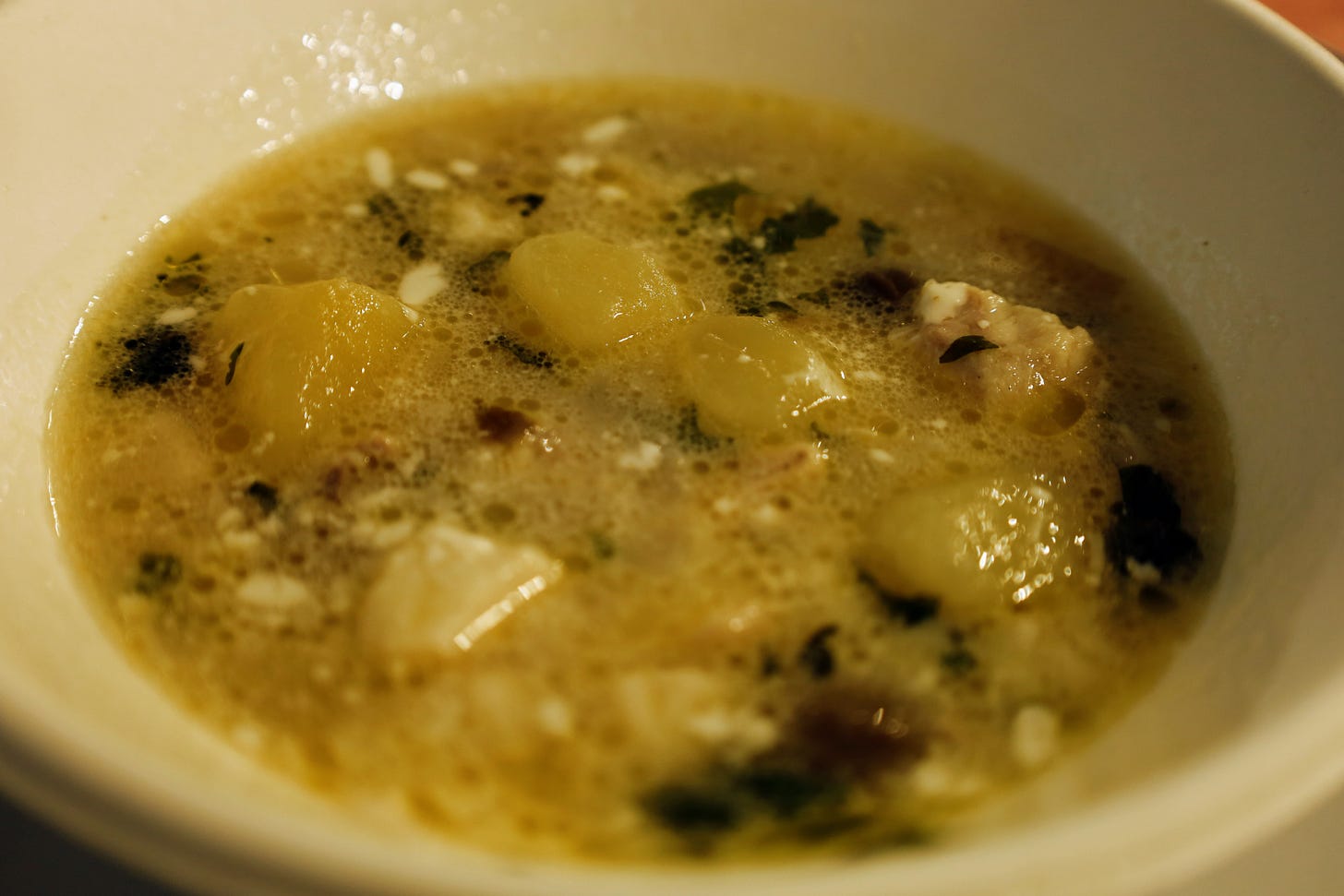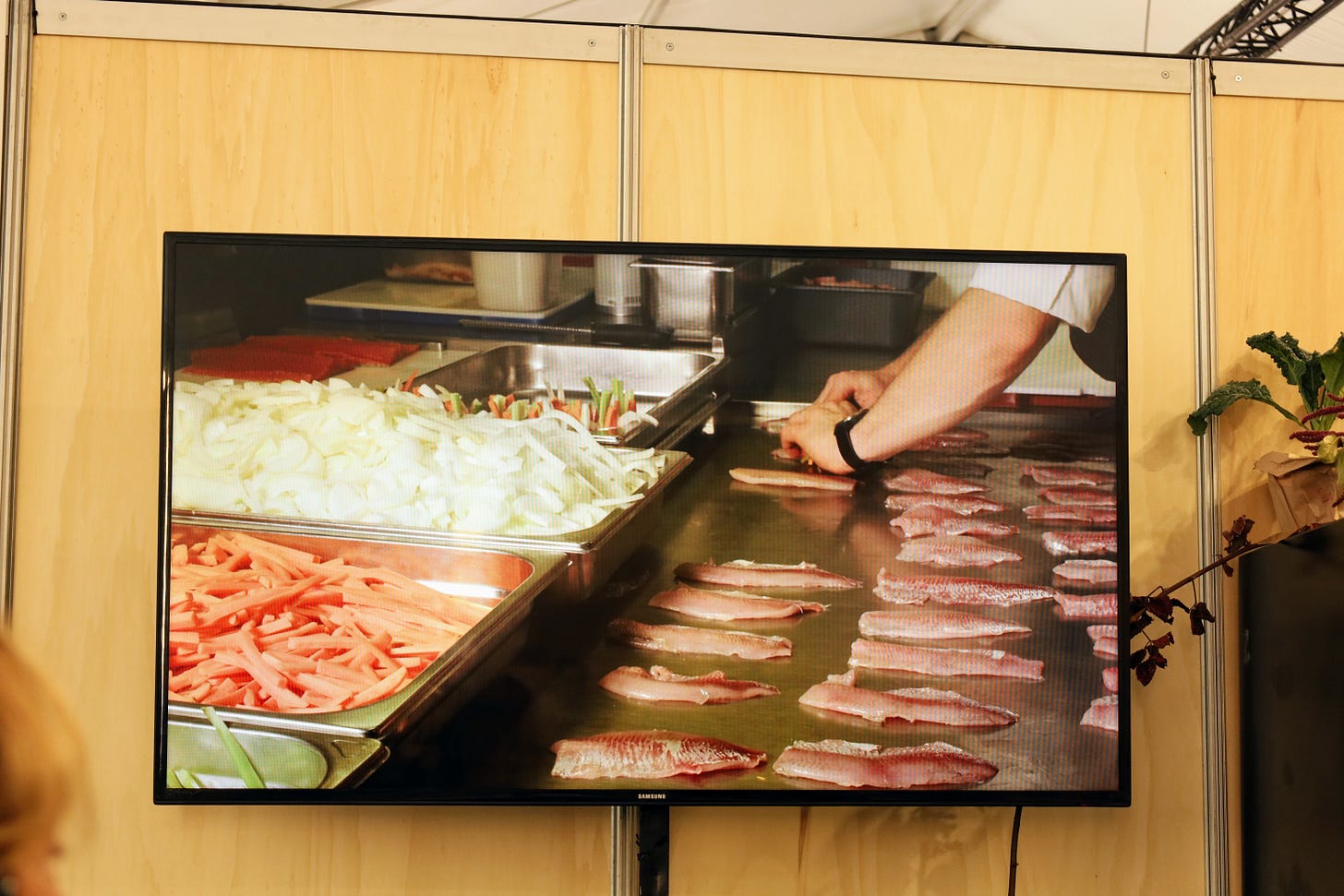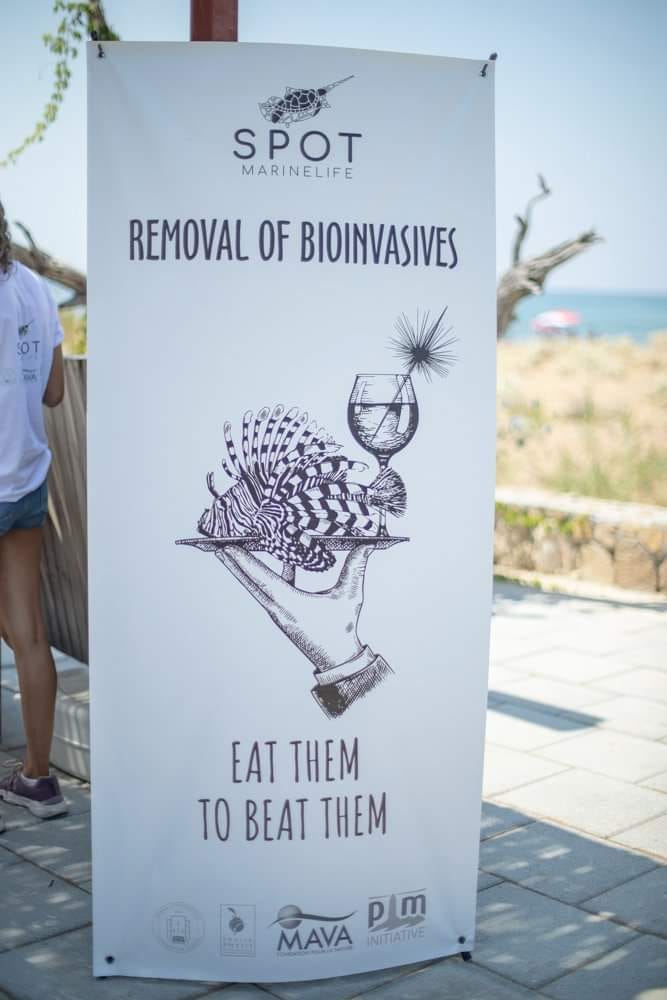Eat’em to Beat’em
Alien invasive species and what to do with them
I’d planned to celebrate this as my 100th issue but guess what? It’s actually Issue no. 102. #faceplam I can’t believe how rusty my math skills have become.
Anyway, I’m going back to last Summer for this issue, which I hope will be a little lighter than the previous two.
A fishy start
It was a beautiful, late September afternoon in Turin but I was inside a makeshift room, attending a Slow Food Terra Madre workshop on “alien presences”. I was also eager to tug into the morsels of food in front of me.
The unidenfiable blob on the left - my poor photography skills are to blame - is a Roach Carpione (not the insect). To the right are Fried Wels Catfish Balls. A cracker in the centre is for those of us who are powered by carbs.
Carpione is a quick pickling technique using wine and vinegar that’s traditional to northern Italy, which means the roach, with julienne carrots, onions and celery in its fold, has a tangy taste. If you like pickled fish, you’ll like this. I was slightly ambivalent.
The balls, on the other hand, were crunchy and tasty. The addition of the Chinese mugwort, also known as artemisia verlotiorum, adds a slightly bitter but not unpleasant taste.
But the fish soup was a real revelation. Pieces of roach, catfish and potatoes bobbled in a beautiful broth flavoured with capers, Chinese mugwort and a fascinatingly-named herb called “gallant soldier”. Drops of sour cream added both added texture and a little tartness.
The dishes were prepared by Michelin-starred Italian chef Massimiliano Celeste but he was keen to stress their simplicity. He said he wanted to create dishes that can be replicated at home.
I was happy, both with the food and the hope that I was helping to bring back some equilibrium to ecosystems that have been disrupted by the arrival, accidental or intentional, of new animals and plants. In many cases, their arrival herald negative consequences to the native animals and plants.
For example, in less than a decade, the roach has established itself as one of the most dominant species in Lake Maggiore, according to a 2008 research paper which also found that of the 32 species that inhabit the picturesque lake, only 20 were native.
Wels catfish is also a voracious predator - it feeds on invertebrates, fish, amphibians, reptiles, birds and mammals, and grow up to 2.5 metres in length, Slow Food said. Like roach, it was seen as a potential cause of the decline in native fish.
Both fish hail from Eastern Europe and were introduced to Italy at the turn of the century. Gallant soldier is originally from South America and a traditional ingredient in Colombian dishes while artemisia is indigenous to Asia. Both plants are known for their ability to propagate at great speed.
Before we left, Massimiliano gave us more ideas on how to prepare the fish. Roach is good for pasta filling while a dish of marinated and smoked wels catfish served with gorgonzola and saffron sauce is also very tasty, he said.
“Invasivorism”
That’s the word to describe what I was doing that September day - eating invasive species to control or eliminate their numbers. Why do we do this?
Because they are “one of the biggest causes of biodiversity loss and species extinctions, and are also a global threat to food”, according to conservation organisation IUCN.
Let’s make one thing clear here - not all alien species are bad. Some of the most famous cuisines in the world today - Thai, Italian, Indian, Mexican, just to name a few - would not exist if not for the arrival of alien species like potatoes, tomatoes, coriander, and herbs and spices.
But some can be devastating. Take the examples below from a 2018 article I wrote.
“In the United States, it is a wood-borer beetle that arrived in packaging and which has indirectly caused an estimated 21,000 premature human deaths. In South Korea, it is a worm that forced the government to cut down 10 million pine trees.
And in Africa, it is a maize-munching pest from the Americas that has infested millions of hectares of crops, and threatens the food supply and income of more than 300 million people.”
A few more examples, courtesy of the European Food Safety Authority.
“The Harlequin ladybird, from Asia, poses a deadly threat to native ladybirds and other insects in Europe; coypu, mink and musk rat, brought from America for their fur, are now wild in Europe, damaging canals and flood protections systems and decimating indigenous species such as water voles.”
So humans have come up with a nifty solution: Eat Them!
In Barbados, the government is urging locals to eat lionfish, which it says has attacked the country’s coral reefs and devoured other fish, in Wisconsin, pesky snails have become ingredients in gourmet meals, and a Berlin food truck is serving up a hodgepodge of invasive species including Louisiana crawfish, raccoon and Nile goose.
If you want to try it at home, check out Eat The Invaders, a website set up by Joe Roman, a conservation biologist, author and father of invasivorism.
Spiky treats
Sea urchins, whose thick, creamy, deep orange gonads are prized delicacies known as uni in Japanese cuisine, are an animal that is troubling waters on multiple continents.
Not all species of sea urchins are edible and they have spines that are often long, sharp and carry venom. What’s worse is that they are turning up everywhere. From Southern California and the Mediterranean to Australian and the coast of Chile, their expanding populations are alarming a lot of scientists.
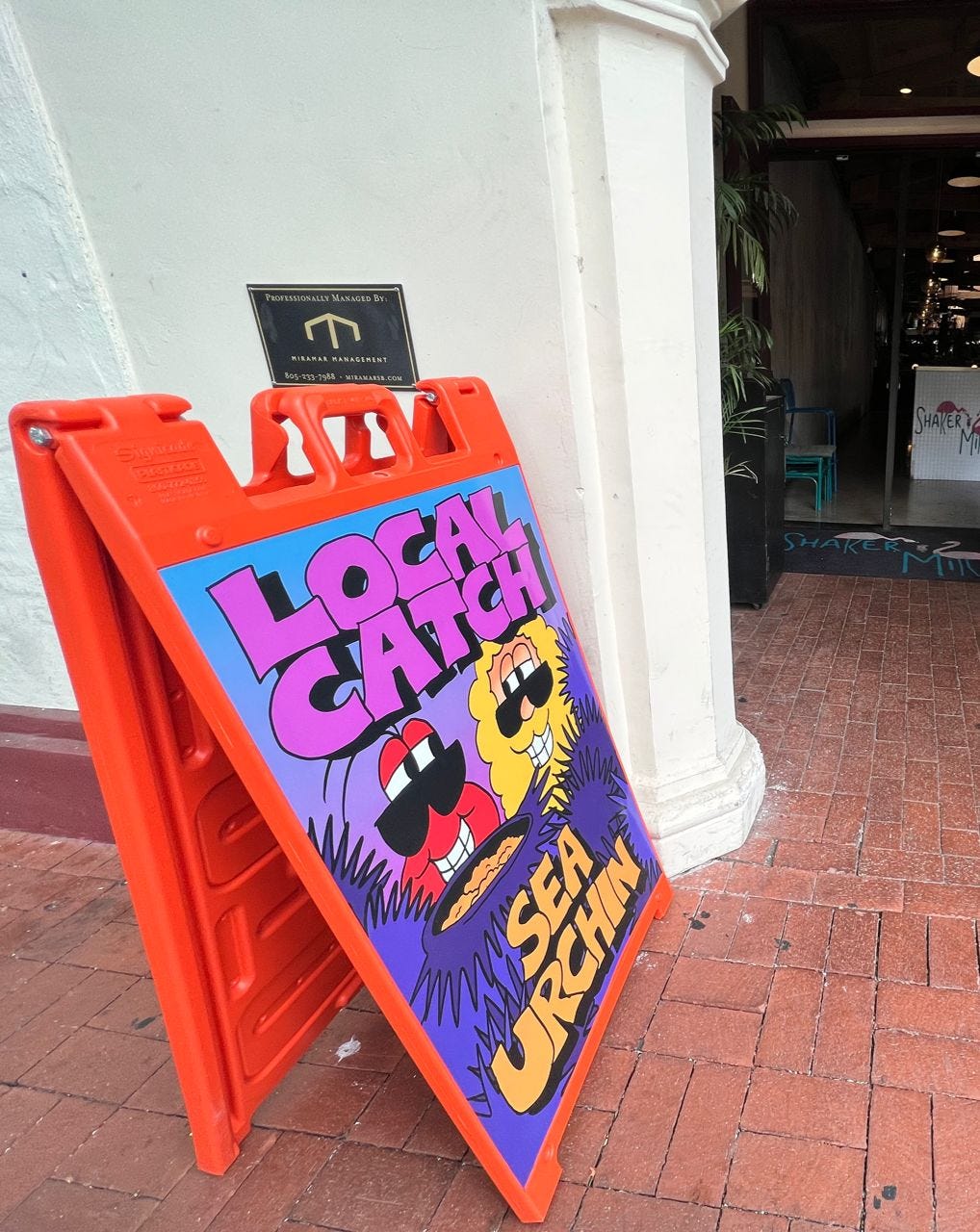
We came across the above sign in downtown Santa Barbara where purple sea urchins are gobbling up California’s underwater kelp forests, which in turn are killing off important fisheries for red abalone and red sea urchins.
This has prompted scientists, chefs, businesses and conservationists to team up, not just in California but also in Cyprus (see below), a strategically-located island that sits at the crossroads of Europe, the Middle East and Africa.
The above tasting event, held on an important turtle nesting beach by local conservation organisation SPOT, also featured fried lionfish, a wonderful-looking creature that some scientists call “the most damaging invasive fish species known to science”.
“We cut the spines of lionfish with garden scissors without touching them and once we get rid of the spines, there is no problem. You can cook it in lots of different ways. Its meat is delicious,” said Damla Beton from SPOT, one of the fine folks I got to know last summer through a fellowship programme.
“Basically the idea was giving (people) a chance to try it and see that it tastes good so if they see it on a menu or in a fish shop, they order or buy it.”
The issue is becoming more prominent because experts say these plant-and-animal killing pests and diseases have an ally in climate change. In fact, many say a combination of factors including warming waters driven by climate change and El Niño caused sea urchins to proliferate from around 2014.
Also, there may be limits to invasivorism. Many of the purple sea urchins in California have little to no uni, because they’ve overgrazed on coastal kelp and are now starving, said this NYT piece from 2021.
“Climate change facilitates the spread and establishment of many alien species and creates new opportunities for them to become invasive… (Such species) can reduce the resilience of natural habitats, agricultural systems and urban areas to climate change.
Conversely, climate change reduces the resilience of habitats to biological invasions.” - IUCN
Three Good Reads
The first two articles are old but they’re great and are related to this week’s issue so why not include them, I thought.
Can We Really Eat Invasive Species into Submission? - Scientific American
This 2017 piece from Michael Snyder is about a giant Amazon fish that can weigh up to 400 pounds called paiche which turned up in Bolivia’s waters from Peru. It was first touted as a sustainable alternative to overfished local species but led to unintended consequences.When Invasive Species Become the Meal - New York Times
Published in 2020, Ligaya Mishan’s story, accompanied by Kyoko Hamada’s amazing photography, traced the history of ‘alien species’, covered fascinating tales of destructive plants, and asked uncomfortable questions on whether this is just another instance of us bending the world to our will.My Printer is Extorting Me - The Atlantic
This article has nothing to do with food systems or climate change - although unsustainable paper production is linked to deforestation - but it is both hilarious and true. Beyond the humour is a serious, thought-provoking piece around digital rights on many of our favourite gadgets.
Like the author Charlie Warzel, we have recently purchased a printer. Thankfully we went for a different brand, one we thought wasn’t in the industry to sell cartridges. Wish us luck.
As always, please feel free to share this post and send tips and thoughts on mastodon @ThinInk@journa.host, my LinkedIn page, twitter @thinink, or via e-mail thin@thin-ink.net.


